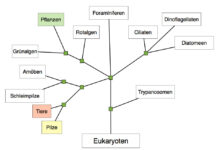System Crasher: 7 Shocking Truths You Must Know Now
Ever wondered what turns a smooth-running system into digital chaos? Meet the system crasher—silent, sneaky, and devastatingly effective. This isn’t just a glitch; it’s a calculated disruption with real-world consequences.
What Exactly Is a System Crasher?

The term system crasher might sound like something out of a sci-fi thriller, but it’s very real in today’s tech-driven world. A system crasher refers to any entity—be it software, hardware, malware, or human action—that causes a computing system to fail unexpectedly. These crashes can range from minor hiccups to full-scale outages that bring down entire networks.
Defining the Term in Modern Tech
In technical terms, a system crasher is any component or behavior that triggers an unhandled exception, memory overflow, kernel panic, or hardware fault, leading to system instability or complete shutdown. It’s not always malicious—sometimes, it’s just bad code or incompatible drivers. But when used intentionally, a system crasher becomes a weapon.
Types of System Crashers
- Software-based crashers: Malicious scripts or poorly coded applications that exploit system vulnerabilities.
- Hardware-induced failures: Overheating, power surges, or failing components that physically damage systems.
- Human-triggered disruptions: Accidental misconfigurations or deliberate sabotage by insiders.
“A single line of faulty code can be more destructive than a virus.” — Dr. Elena Torres, Cybersecurity Researcher at MIT.
The Evolution of System Crashers Over Time
The concept of a system crasher has evolved dramatically since the early days of computing. What began as accidental programming errors has transformed into sophisticated cyber weapons capable of crippling national infrastructure.
From Early Computing Glitches to Modern Exploits
In the 1960s and 70s, system crashes were mostly due to hardware limitations and software bugs. The infamous Therac-25 radiation therapy machine is a tragic example—poor software design led to fatal overdoses. Fast forward to the 2000s, and we see the rise of malware like Stuxnet, a state-sponsored worm designed to crash Iran’s nuclear centrifuges by manipulating industrial control systems.
Milestones in System Crasher History
- 1988: Morris Worm – One of the first internet-distributed malware that unintentionally crashed thousands of systems.
- 2003: SQL Slammer – Exploited a buffer overflow vulnerability, crashing SQL servers globally within minutes.
- 2017: NotPetya – Masqueraded as ransomware but was designed purely to destroy systems, causing over $10 billion in damages.
How System Crashers Work: The Technical Breakdown
To understand how a system crasher operates, you need to dive into the layers of system architecture—from user applications to kernel-level processes. Most crashes occur when these layers are compromised or overwhelmed.
Exploiting Memory Vulnerabilities
One of the most common techniques used by system crashers is exploiting memory vulnerabilities such as buffer overflows, use-after-free errors, or heap corruption. When a program writes data beyond its allocated memory space, it can overwrite critical system instructions, leading to unpredictable behavior or immediate crashes.
For example, the PrintNightmare vulnerability in Windows Print Spooler allowed attackers to execute arbitrary code with system privileges, potentially turning any machine into a system crasher.
Kernel-Level Attacks and Privilege Escalation
Advanced system crashers often target the operating system kernel—the core component managing system resources. By gaining kernel access through privilege escalation, attackers can disable security modules, corrupt system calls, or force a Blue Screen of Death (BSOD) on Windows systems.
Tools like Exploit Database list hundreds of known kernel exploits that can be weaponized into system crashers.
Real-World Examples of System Crashers in Action
Theoretical knowledge only goes so far. To grasp the true impact of a system crasher, we must look at real-world incidents where digital sabotage caused tangible harm.
The 2010 Stuxnet Attack on Iranian Nuclear Facilities
Stuxnet remains one of the most sophisticated system crashers ever deployed. Designed jointly by U.S. and Israeli intelligence, it infected programmable logic controllers (PLCs) in Iran’s Natanz uranium enrichment facility. Instead of stealing data, it altered rotor speeds in centrifuges, causing them to spin out of control and self-destruct—all while displaying normal readings to operators.
This wasn’t just a crash; it was a physical destruction orchestrated through digital means. According to reports, nearly 1,000 centrifuges were damaged, setting back Iran’s nuclear program by years.
NotPetya: The Global Cyberstorm of 2017
Initially mistaken for ransomware, NotPetya was later revealed to be a wiper malware designed to crash systems permanently. It spread via a compromised software update from a Ukrainian accounting firm, quickly infecting multinational corporations including Maersk, Merck, and FedEx.
The attack caused widespread operational paralysis. Maersk, for instance, had to reinstall 4,000 servers and 45,000 PCs, costing an estimated $300 million. The total global damage exceeded $10 billion, making it one of the costliest cyberattacks in history.
“NotPetya wasn’t about money—it was about destruction. It was a system crasher with a geopolitical agenda.” — Kevin Mandia, CEO of FireEye.
System Crasher vs. Hacker: Understanding the Difference
While often used interchangeably, the terms system crasher and hacker are not synonymous. A hacker is a broad term for someone who explores or manipulates computer systems, while a system crasher specifically aims to cause failure or disruption.
Intent and Methodology Compared
Hackers may have various motives: curiosity, data theft, espionage, or even ethical testing (white-hat hackers). In contrast, a system crasher’s primary goal is destabilization. Their methods are often brute-force—overloading systems, injecting crash-inducing code, or exploiting zero-day vulnerabilities solely to cause downtime.
For example, a penetration tester might identify a buffer overflow flaw to help fix it, whereas a system crasher would exploit the same flaw to bring down the server.
Legal and Ethical Implications
While some hacking activities fall under legal gray areas (e.g., bug bounty programs), deploying a system crasher is almost always illegal. Laws like the U.S. Computer Fraud and Abuse Act (CFAA) criminalize unauthorized access and system disruption. Even in cybersecurity research, testing system crashers requires strict containment and authorization.
Preventing System Crasher Attacks: Best Practices
Given the destructive potential of system crashers, prevention is not optional—it’s essential. Organizations must adopt a multi-layered defense strategy to protect against both accidental and malicious crashes.
Regular Patching and System Updates
One of the most effective defenses is keeping software up to date. Many system crashers exploit known vulnerabilities that have already been patched. For instance, the EternalBlue exploit used in NotPetya targeted a flaw fixed by Microsoft months earlier—but unpatched systems remained vulnerable.
Automated patch management tools like Windows Update for Business or third-party solutions like SolarWinds Patch Manager can help ensure timely updates across large networks.
Implementing Robust Monitoring and Detection
Early detection can prevent a minor anomaly from becoming a full-blown system crash. Security Information and Event Management (SIEM) systems like Splunk or Elastic SIEM collect logs from servers, firewalls, and endpoints to detect unusual patterns—such as repeated failed login attempts or abnormal memory usage—that may indicate a system crasher in action.
Behavioral analytics tools can also flag deviations from normal system performance, enabling proactive intervention.
The Role of AI in Detecting and Deploying System Crashers
Artificial Intelligence (AI) is a double-edged sword in the world of system crashers. While it enhances defense mechanisms, it also empowers attackers to create smarter, more adaptive crash-inducing tools.
AI-Powered Threat Detection Systems
Modern cybersecurity platforms use machine learning to identify patterns associated with system crashes. For example, Darktrace’s AI engine learns the ‘pattern of life’ for every device on a network and can detect subtle anomalies—like a server suddenly sending massive amounts of data—that might signal an impending crash.
These systems can autonomously isolate affected devices, block malicious traffic, or alert administrators before damage occurs.
Malicious Use of AI to Create Smarter Crashers
On the flip side, attackers are using AI to develop self-evolving malware. Imagine a system crasher that learns which vulnerabilities are most effective, adapts its payload in real-time, and avoids detection by mimicking legitimate traffic. Research from Black Hat conferences has demonstrated proof-of-concept AI-driven exploits that can autonomously find and exploit weaknesses.
As AI becomes more accessible, the risk of intelligent system crashers increases—especially in environments with poor security hygiene.
System Crasher in Gaming: When Fun Turns Toxic
Beyond enterprise networks and critical infrastructure, the term system crasher also appears in online gaming communities. Here, it refers to players or tools designed to disrupt game servers or crash opponents’ systems.
Griefing and Server Disruption Tactics
In multiplayer games like Minecraft, Fortnite, or Call of Duty, some players use mods or scripts to flood servers with packets (a form of DDoS), spawn infinite entities, or exploit game physics to cause lag or crashes. This behavior, known as griefing, ruins the experience for others.
For example, in Minecraft, a player might use a “tnt duping” glitch to create massive explosions that overload the server, forcing it to crash. While not illegal in most cases, such actions often violate platform terms of service.
Anti-Cheat Measures and Developer Responses
Game developers have responded with robust anti-cheat systems like BattlEye or Easy Anti-Cheat. These tools monitor for suspicious behavior, block known crash-inducing mods, and ban offenders.
Some games now run server-side validation to prevent client-side exploits. For instance, Valve’s Source Engine verifies player actions on the server, reducing the impact of local cheats or crashers.
Legal Consequences of Being a System Crasher
Intentionally causing a system crash is not a victimless prank—it’s a crime with serious legal repercussions. Jurisdictions worldwide have enacted laws to deter and punish such actions.
Criminal Charges and Penalties
In the United States, launching a system crasher attack can lead to charges under the Computer Fraud and Abuse Act (CFAA), with penalties including fines up to $250,000 and imprisonment for up to 10 years—more if the attack affects critical infrastructure.
Internationally, the Budapest Convention on Cybercrime provides a framework for prosecuting cyber offenses, including unauthorized system interference. Countries like Germany, Japan, and Australia have adopted similar legislation.
Case Studies of Prosecuted System Crashers
Michael Calce (aka Mafiaboy): In 2000, the 15-year-old launched DDoS attacks on Yahoo, eBay, and CNN, crashing their websites.He was arrested and sentenced to eight months in youth detention.Paranoid in the U.K.: A hacker who created the ‘Mirai’ botnet variant used to crash gaming servers was sentenced to two years in prison in 2021.NotPetya Perpetrators: While no individual has been formally charged, U.S.
.officials have attributed the attack to Russian military intelligence (GRU), leading to international sanctions.Future Trends: The Next Generation of System Crashers
As technology advances, so do the tools and tactics of system crashers.The future will likely see more targeted, stealthy, and widespread attacks—especially as IoT, cloud computing, and AI become ubiquitous..
IoT Devices as Crash Vectors
With billions of Internet of Things (IoT) devices—many poorly secured—connected to networks, they represent a goldmine for system crashers. A compromised smart thermostat or security camera can be used to launch DDoS attacks or infiltrate corporate networks.
The Mirai botnet, which hijacked hundreds of thousands of IoT devices to crash major websites in 2016, is a stark warning of what’s possible. Future variants could target industrial IoT systems, potentially crashing power grids or transportation networks.
Cloud Infrastructure Vulnerabilities
As more businesses migrate to the cloud, system crashers are shifting focus to cloud environments. Misconfigured storage buckets, weak API keys, or compromised containers can all serve as entry points.
A 2020 incident saw a hacker exploit a misconfigured AWS S3 bucket to inject malicious code into a popular npm package, affecting thousands of downstream applications. While not a direct crash, it shows how cloud supply chains can be weaponized into system crashers.
Providers like AWS Security Hub and Google Cloud Security Command Center offer tools to detect and mitigate such risks, but human oversight remains critical.
How to Recover from a System Crasher Attack
Despite best efforts, some organizations will still fall victim to a system crasher. The key to minimizing damage lies in rapid response and effective recovery strategies.
Incident Response Planning
Every organization should have a documented incident response plan (IRP) that outlines steps to take when a system crash occurs. This includes identifying the attack vector, isolating affected systems, preserving logs for forensic analysis, and notifying stakeholders.
Frameworks like NIST SP 800-61 provide guidelines for effective incident handling, helping teams respond systematically rather than reactively.
Data Backup and Disaster Recovery
Regular backups are the last line of defense. If a system crasher wipes data or corrupts files, having recent, offline backups ensures business continuity. The 3-2-1 backup rule—three copies, two media types, one offsite—is widely recommended.
Cloud-based disaster recovery services like Azure Site Recovery or AWS Disaster Recovery allow organizations to failover to mirrored environments within minutes, drastically reducing downtime.
“Recovery isn’t about if, but when. Assume you’ll be hit by a system crasher—and prepare accordingly.” — Chris Krebs, Former CISA Director.
What is a system crasher?
A system crasher is any software, hardware, or human action that causes a computing system to fail unexpectedly. This can be accidental (like a software bug) or intentional (like malware designed to destroy systems).
Can a system crasher be legal?
In rare cases, yes—such as authorized penetration testing or red team exercises where security professionals simulate attacks to improve defenses. However, unauthorized use is illegal in most jurisdictions.
How can I protect my system from crashers?
Keep software updated, use strong firewalls, deploy intrusion detection systems, conduct regular backups, and train employees on cybersecurity best practices. For businesses, implementing a formal incident response plan is crucial.
Is a virus the same as a system crasher?
Not exactly. While some viruses are designed to crash systems, others aim to steal data or spy on users. A system crasher specifically focuses on causing system failure, whether through malware, hardware faults, or network attacks.
Have system crashers ever targeted governments?
Yes. High-profile examples include Stuxnet (targeting Iran’s nuclear program) and NotPetya (affecting Ukrainian and global institutions). These attacks show how system crashers can be used as tools of cyber warfare.
From ancient software bugs to AI-powered cyber weapons, the evolution of the system crasher reflects the growing complexity of our digital world. Whether in enterprise networks, online games, or national infrastructure, these disruptive forces demand vigilance, preparation, and robust defenses. Understanding how they work, who uses them, and how to stop them is no longer optional—it’s a necessity in the 21st century.
Further Reading:









